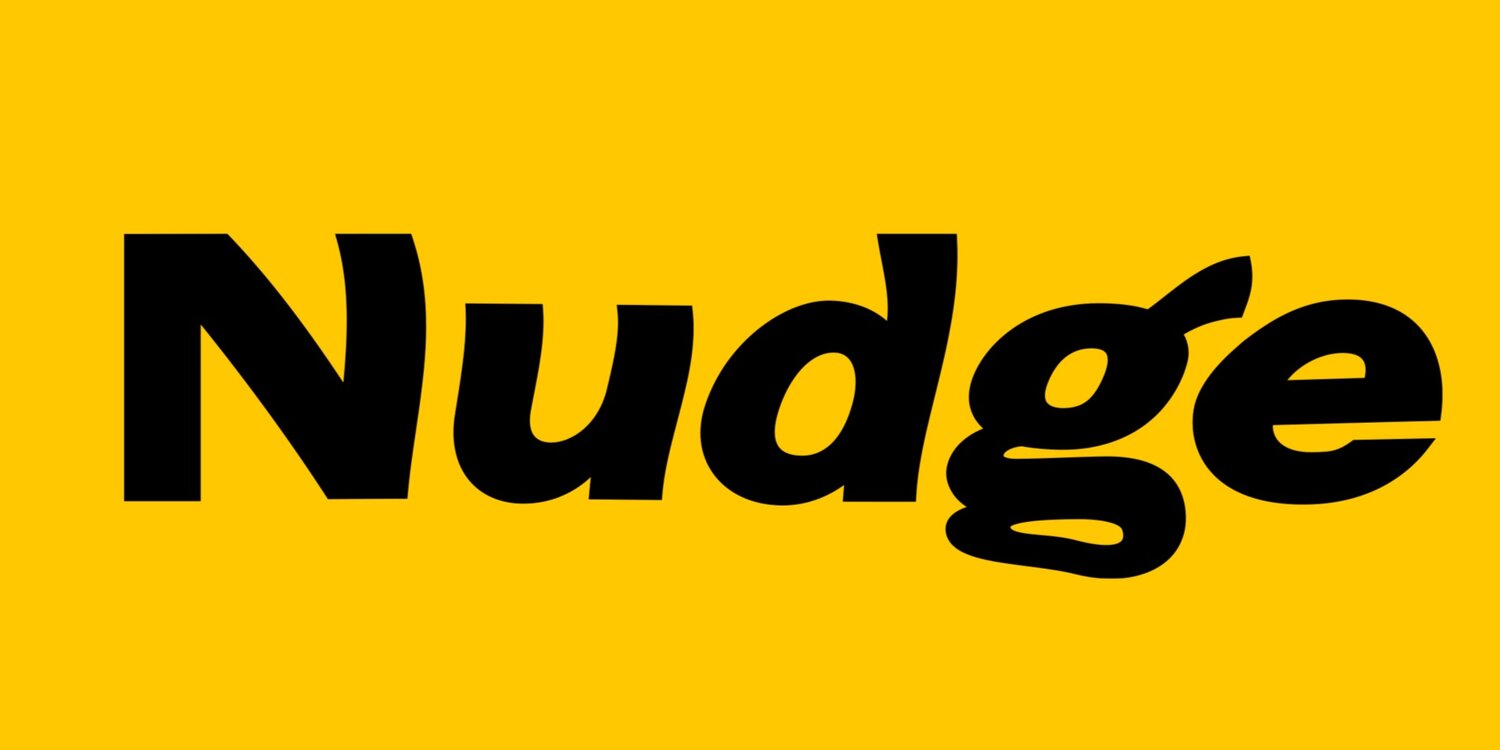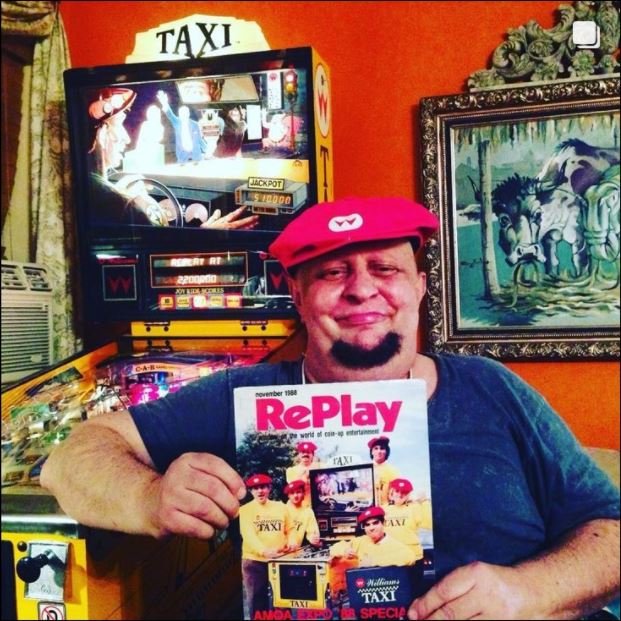Part IV: One Last Trip Around Planet Pythonia
By Joe Ciaravino
There is no doubt in my mind that the late, great Python Anghelo was an eccentric genius who earnestly believed that pinball was a genuine American art form. His work advanced the scope of what a pinball game could be, and he always believed that pinball would continue to be relevant to every new generation. He had a photographic memory and an artistic talent that was only matched in its attention to anatomical detail by the great Renaissance masters. All this mixed together with the surreal imagination of Salvador Dali.
However, and I say the following with the most profound respect and admiration: Python Anghelo was also a boozing, drug-addled, egomaniacal, degenerate sex fiend! There is absolutely no way anyone in this day and age would ever hire a man like him to make games for children!
Missed the other Python stories? NO YOU DIDN’T. HERE THEY ARE
Dream Designs, Redemption Games, and the Pinball of the Future
After Capcom, Python moved further from the mainstream, exploring dream designs, including a game where the player would sit down underneath the playfield in a clear glass bubble with the flippers and drop targets in front of their face. For instance, in Sharpshooter 2015, an interactive laser gun made of pinball parts was used in the backbox.
In the early to mid-2000s, Python developed a few ticket redemption games intended for family fun centers like Chuck E Cheese. The game Wacky Ducks was developed for ICE and a few years later, Chameleon Paradize for Bay Tek. Both were incredibly popular and lucrative games when they launched and are still big earners today. Python claimed that he made more money doing a redemption game than any of the pinball games he developed for Williams and they allowed him to have a comfortable retirement.
But Python still had a passion for pinball and wanted to be an innovator in the pinball industry, which he felt was slowly dying due to its use of cheap materials and an over-reliance on outdated mechanisms. Python suggested changing the ball itself. Python called the standard metal alloy pinball, “a wrecking ball." He suggested that the pinball of the future would be a "multi-composite, multi-material pinball which will have LEDs light up and change colours. The LEDs inside it will be charged by a motion energy generator."
"When I wanted to do a polycarbonate laminate; a translite to the playfield in polycarbonate, the playfields became indestructible! And then we would not have a replacement market. We'd be fucked. We'd be out of business." Python admitted "The pinball market is a replacement market."
Python, well, he burns some bridges. Basically, all the bridges and a few barns.
In June of 2007, an embittered and possibly highly inebriated Python Anghelo was interviewed by Clay Harrell, a pinball collector and host of This Old Pinball’s podcast (TOPcast). What resulted from their phone conversation became a very infamous episode in which Python spilled all the tea about his former co-workers at Williams and Capcom and talked a lot of smack about the ones he still had major beef with.
Throughout the interview, Python insisted multiple times that the host, Clay, read the most famous work of noted Libertarian and founder of the Objectivist philosophical system, Ayn Rand.
"Did you read Ayn Rand's The Fountainhead? (she is) the greatest writer and novelist that ever lived on this planet."
Python would confess in his gravely Eastern European accent: "I'd rather people hate me for the truth than like me for a lie. But I will tell you like it is."
During the 100+ minute interview, Python publicly criticized all the people in the industry who he called "Money men", "Copycats,” “Paper pushers," "Manipulators," “Glory-Grabbers," and "Bullshitters" and who choked all the creativity out of designers. He reviled their formulaic, safe, unimaginative products. "Business took over the artform."
Python refused to give up on the pinball industry despite the fact that at the time there was only Stern pinball keeping the lights on "Pinball is not dead, it's just in a little coma." But over recent years "It got the shit beaten out of it by money-men." He laid the failures of pinball at the feet of all the "Manipulators", "Glory-Grabbers" and the "Bullshitters (that) took over the industry."
Python confessed that “I was the guy that drove everybody crazy… except my own team.” He recalls when he was a little boy back in Romania, playing arcade games with his friends at seaside arcades along the coast of the Black Sea. Python truly felt that “Really the most important thing is that I kept my promise from childhood. That I want the kids who put the quarter in a game not to feel ripped off.” He would later add, “You cannot even bullshit little kids. They know what you've did is a fake to just get it done and make a quick buck.”
Roger Sharpe and Joe Kaminkow: Python Homies
Python praised Roger Sharpe and Joe Kaminkow for acquiring great licenses like Bugs Bunny and Popeye for him to work on.Harry Williams to Python was "A titan" and "A giant." Python was always ready to dole out reverent praise for Roger Sharpe, calling him “A Pinball guru.” “I love him.” He was a “Pinball genius.” Going so far to as to say “He is Pinball Jesus.”
He also bestowed “Crazy Cat” status upon Eugene Jarvis who was a former Williams programmer and the co-founder of Raw Thrills. "Eugene Jarvis was a foreseer, a Yoda." Asserting, “Anybody that hooks up with Eugene Jarvis is gonna win the Superbowl of idiot game design.” He also regarded fellow Bally/Williams designers, George Gomez, Dennis Nordman as "Good guys."
However, he said that the VP of Williams, Ken Fedesna was “Was a nice guy but he had no spine.” A jaded Python continued on “The more I learned about my role models, the more truth I got to, I was always disappointed.”
He also proclaimed "I don't let people who are bozos interfere and hold back my real heroes."
Truly, Python Anghelo was the greatest Edgelord the pinball world had ever seen.
In that same interview, he called Gary Stern "A moron." for not wanting to pick up his rejected design for Zingy Bingy. Remember that one? Yes, the sex pinball. (Ed note: Maybe Uncle Gare got that one right)
I mean it does seem like he likes these guys so IDK man? - Ed
Throughout the interview Python went on to slag some of his fellow co-workers, even those on his design teams. "All those guys they claim they are designers. Since I left Williams they didn't design anything. Barry Oursler, Mark Ritchie, any of those guys. I still design games!" adding "When I left Williams, Barry Oursler couldn't do a game. When Mark Ritchie was done with me, he couldn't design a game."
He resented the fact a year after Python’s departure from Williams Barry Oursler and Larry DeMarr went ahead and made Jack*Bot based on his own ideas without any of his involvement or input. He felt deeply betrayed and openly mocked the hybrid concept “Take Jack*Bot, that was Barry Oursler's bullet-- he committed suicide! Jack*Bot was a copy of Python's Machine, Pin*Bot and Jokerz!”
He went on to state that "Larry DeMarr is nothing but a great programmer and a manipulator and a copycat. Larry DeMarr is not a creator."
Python would continue to rant, "That's what Lawlor and Barry Oursler and Mark Ritchie were; they're fucking brick-layers, they're not great architects."
Python had a particular issue with fellow pinball designer, Pat Lawlor in particular, and seemed to regard him with a great deal of both suspicion and repulsion. "Pat Lawlor is a scumbag. I don't want to talk about him. I don't want to talk about that guy... evil man." And went on to say "He (Lawlor) is Keating from The Fountainhead." And stated "Lawlor, all these copycats, they don't know games. Lawlor copied my head idea for Funhouse."
He continued to accuse Lawlor of straight up theft! "The son-of-a-bitch broke into my office with Larry DeMarr! And pushed it politically ahead of me while I was fishing in Canada!" Python also let slip the fascinating claim that "Addams Family isn't Pat Lawlor's game, it's Roger Sharpe's"
Python bragged that "Even Lawlor, after I was gone and he didn't have any freaking shit to copy from Eugene or me... they're done! They're all done!" feeling like he had gotten the last laugh.
Even though Joe Kaminkow was working for Python’s competition he deeply respected his adversary, "Kaminkow is a marketing genius. If he had been in politics, he would have been president by now."
Python always admired the work of fellow pinball artist, Dave Christensen, however over time, after getting to know Dave better, Python said "We called him "Colonel Nazi". Him and I didn't agree, but he thought Hitler was the cat's meow, whatever. He was a fucked up kid."
Python was never impressed by the design of the unreleased Capcom game, Big Bang Bar. Saying "The layout sucked! It's another formula pinball!" claiming "Rob Morrison couldn't design his way out of a paper bag. Rob Morrison will never design a pinball game." He went on to assert that he came up with the mechanical design of the dancing green lady in the tube from Big Bang Bar "Gary Stern copied the dancing lady for a ba-ba-boom ba-ba bing bar." (I believe this is a reference to the Bada-Bing! pair of dancing strippers from Sopranos by Stern).
He mocked designers who were only trying to out-do and impress other designers or designed games to satisfy elite players and forgot about the core audience for pinball in the process. He cared little for shot flow or deep code, mocking some ambitious designer’s layouts who focused too much on ball movement and kinetics. "Oh it's smooth! Yeah but why are you there? What are you doing?" felt these games lacked the theatrical touch in their presentation.
Python’s number one priority was to ensure that the casual player had a fun experience regardless of what they scored. "I don't want to be an accountant... I don't want to come to a pinball and start calculating and do all this math. Forget it, just throw a score at me."
Python mocked the premise of manufacturers releasing Limited/Collector’s editions as mere price gouging of the customer. "Come on, that plaque is nothing but a paperweight!" He believed a fully packed, new in box game should cost the consumer no more than $5,000 US.
Python never apologized for the public statements he made, although over time he did come to reconcile with some of the former co-workers whose reputation he besmirched. “As an artist, your duty is to be very honest… total honesty is the secret to great art.”
Python at Rest
Soon after, Python was hit with some life-altering news. He was diagnosed with stage 4 metastatic lung cancer in 2011, which, over the next 3 years spread to his brain.When Python’s illness was made public, the entire pinball community rallied around him and generously donated over $19,000 collectively via several online fundraisers to subsidize the cost of his astronomical medical bills.
The side effects of his chemotherapy and radiation therapy often left Python very fatigued and in pain. He would describe the process as “A horror movie experience right out of Frankenstein.” At Pinball Expo 2012 he arrived at the lecture hall by being wheeled into the room on a dolly like Hannibal Lecter wearing a straitjacket and his radiation therapy mask.
Ironically, the sicker Python became, the more positive about the future of pinball and more motivated he felt. Whenever he spoke to his fans in public, he was emphatic about encouraging “the kids”, young people who had “A mind that's not jaded by experience and pre-conceived notions.” This new generation of mechanical engineers, artists and pinball designers would seek to break through the old paradigms like he did in the 1980s “We were too young and stupid and courageous to know otherwise.”
Circus Pinball: One Last Ride
He dedicated all his remaining creative energies to finally make Pinball Circus a mass production game with new mechs and rules. "After my cancer and the treatment my entire attitude changed towards life, towards pinball." At Pinball Expo in 2013 he declared boldly, "We have no time to complain, to waste and to wallow into the past. We gotta move on." And began to assemble a team to realize his true version of The Pinball Circus. Paul Kiefert, James Loflin, John Ballow and even Charlie Emery from Spooky Pinball came together to form a group which Python dubbed “Circus Maximus”. He was their Roman Emperor and they were his faithful centurions.
Python worked and advised on the development of his project which was re-titled Python’s Pinball Circus up until his very last days. Their plan was to develop two prototype whitewood games and then about a dozen “sample games” and if that generated enough interest, a full run of production games.
Only two of the original prototypes of The Pinball Circus games developed for Bally/Williams exist. One went to Ken Fedesna, who was the Executive Vice President of Williams at the time, and the other to Steve Kordek, who later donated it to Tim Arnold at the Pinball Hall of Fame in Las Vegas.
One unique design element to The Pinball Circus was a plastic sculpture of Lolita the acrobat hanging upside down over the middle of the playfield. Python originally intended for her to hang over a set of five lighting inserts that spell "G-S-P-O-T".
A few years ago, Tim Arnold, once took the front glass off to clean his prototype Pinball Circus at the PHoF and while he wasn’t looking, a random kid grabbed the Lolita figurine and immediately smashed it on the floor into three pieces. As far as anyone knows, there is only one remaining sculpt left in existence.
Though Python died thinking that Pinball Circus would eventually be made, as of the time of this article being written, no recent major developments, milestones, or deadlines have been met by the Circus Maximus team. With each passing day, the future of Python’s Pinball Circus becomes increasingly uncertain.
Python Anghelo died on April 9th, 2014 and was buried at Ridgelawn Cemetery just outside of Chicago.
On his gravestone is written, “His Creations live on.”
I personally never had the pleasure of meeting Python while he was alive, but for myself and (I think) many other pinball enthusiasts and artists, there is still a feeling of deep connection with him through his words and his works, even nearly a decade after his untimely passing. So I just wanted to end on a quote by Gonzo journalist, Hunter S. Thompson which always comes to my mind when I think of the late, great Python Anghelo…
“There he goes. One of God's own prototypes. A high-powered mutant of some kind never even considered for mass production. Too weird to live, and too rare to die.”
― Hunter S. Thompson, Fear and Loathing in Las Vegas
References
https://www.youtube.com/watch?v=d4VHh-wn_Hc
https://nebushumor.wordpress.com/2014/05/09/popeye-space-ark-2000-pinball-i-dont-even-know/
https://www.youtube.com/watch?v=Fd8NwEZRuq0
https://www.pinballprofile.com/episode-87-barry-oursler/
https://www.pinballprofile.com/episode-337-thank-you-barry-oursler/
Python Anghelo’s Pinball Coin-Op History:
Python Anghelo Pinball Machines
Comet (Williams 1985, artwork)
High Speed (Williams 1986, backglass artwork)
Grand Lizard (Williams 1986, design and artwork)
Pin*Bot (Williams 1986, concept, design, and artwork)
Big Guns (Williams 1987, design and artwork)
Cyclone (Williams 1988, artwork)
Taxi (Williams 1988, design and artwork)
Jokerz! (Williams 1988, design)
Police Force (Williams 1989, artwork)
Bad Cats (Williams 1989, artwork)
A World of Clowns (Williams, 1990 never developed, concept and artwork)
Bugs Bunny's Birthday Ball (Bally/Williams 1991, concept and artwork)
The Machine: Bride of Pin*Bot (Williams 1991, concept and design)
Hurricane (Williams 1991, artwork)
Fish Tales (Williams 1992, concept)
In Concert: Madonna (Williams 1993 never developed, concept and artwork)
Popeye Saves the Earth (Bally/Williams 1994, concept, design and artwork)
The Pinball Circus (Bally/Midway, 1994, design)
Flipper Football (Capcom 1996, design)
Zingy Bingy (Capcom 1997, concept, design, unreleased)
Python Anghelo Video Games
Joust (Williams 1982 cabinet art, sprite art, animations)
Bubbles (Williams 1982 co-designer, cabinet art)
Sinistar (Williams 1983, sound engineer)
Star Rider (Williams 1983, co-designer, concept, and artwork)
Mystic Marathon (Williams 1984, enemy designer)
Inferno (Williams 1984, designer)
Python Anghelo Redemption Games
Goofy Hoops (Romstar 1994, artwork)
Wacky Ducks (ICE, 2005 design, artwork)
Chameleon Paradize (Bay Tek 2010, design, artwork)








